Balinese people are known as the friendliest in the world. They wouldn't harm a fly, let alone hit another person. But once a year, an entire village in the east of the island turns into a battlefield. The male population of the ancient settlement of Tenganan Pegeringsingan bares their torsos, grabs sharp-spiked pandan leaves, and engages in duels until the first blood. And what's the reason behind this? Of course, it's all about women.
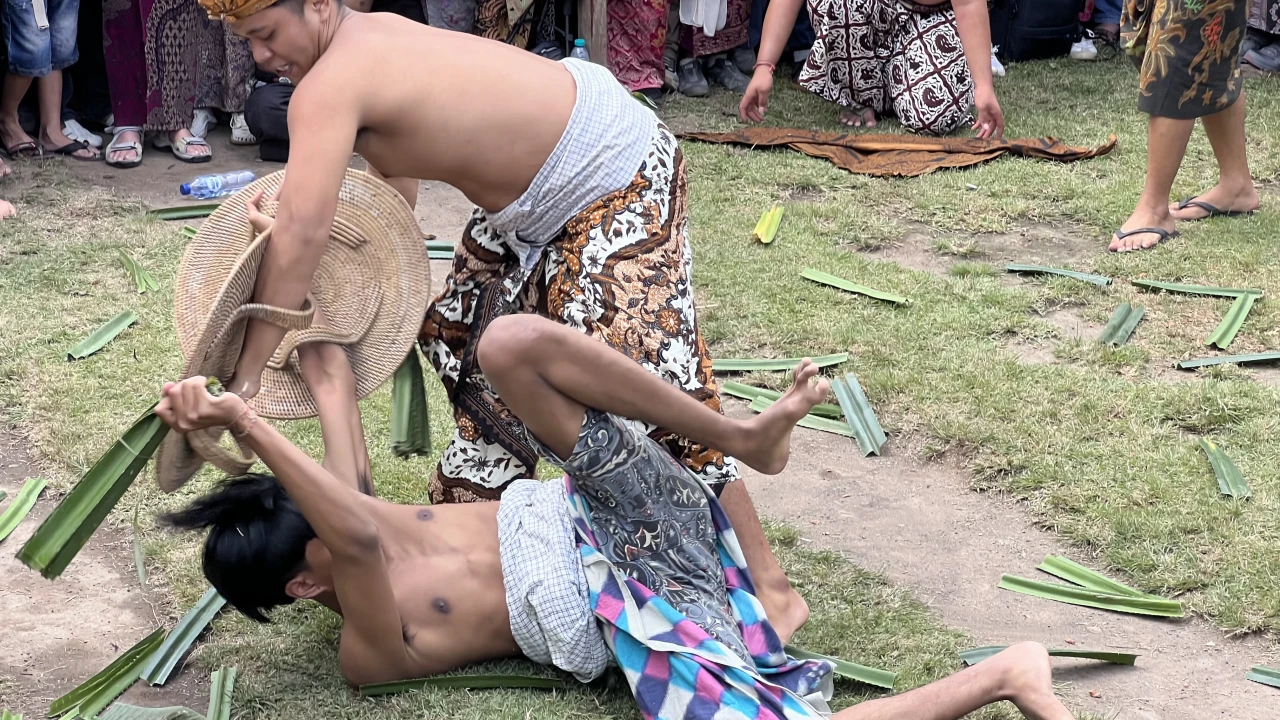
Getting to the village of Tenganan Pegeringsingan, located in Candidasa, is fairly easy—it's about a two-hour bike ride from Canggu and just over an hour from Ubud.
As you approach, you’ll find police on duty, and buses ferrying spectators to the village for the ritual fights. Most of the spectators are local tourists for whom the "pandan wars" are also an exotic event.
Many schoolchildren are present. The villagers have prepared particularly well for their arrival. The entire street leading to the central square, where the main events unfold, turns into a marketplace. You'll find heaps of not-so-healthy (but incredibly tasty) gorengan, assorted toys, and even hamsters in cages.
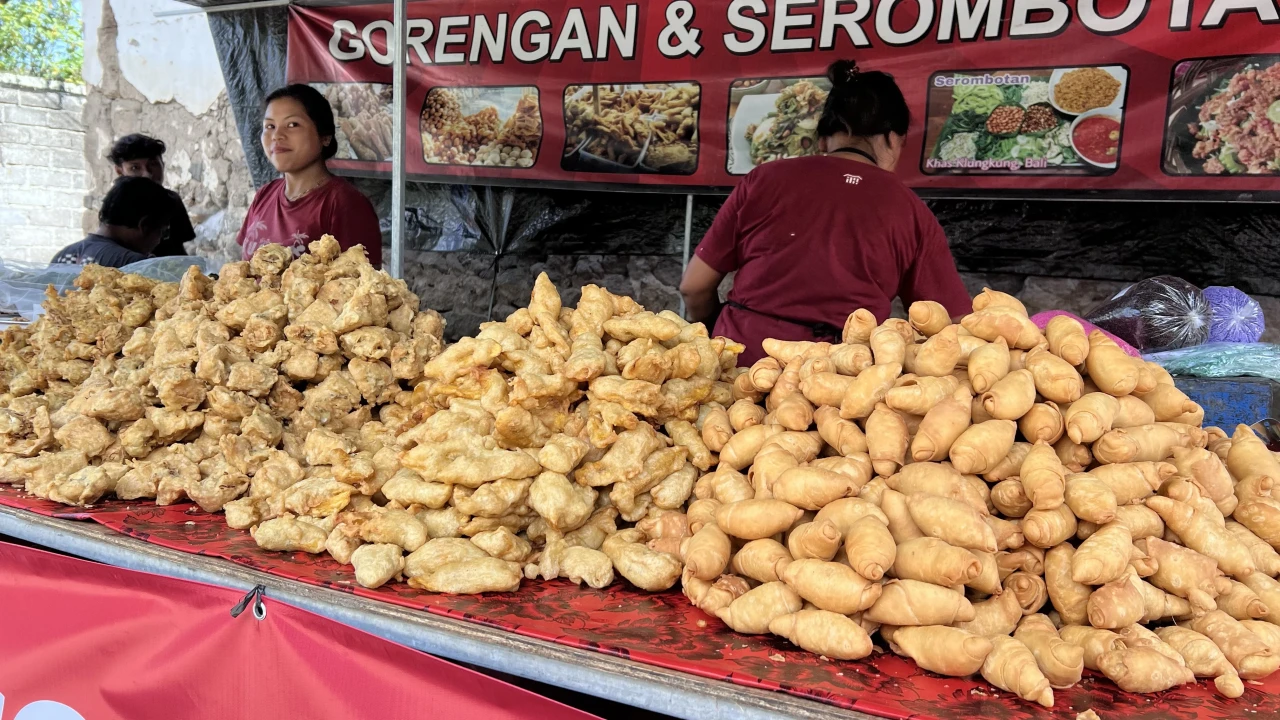
Additionally, there's an opportunity for those feeling lucky. Savvy locals offer games to willing participants. One such game involves throwing three discs to completely cover a red circle. If even a millimeter of the red circle is showing, you lose your 5,000 rupiahs. If you succeed, you win the same amount.
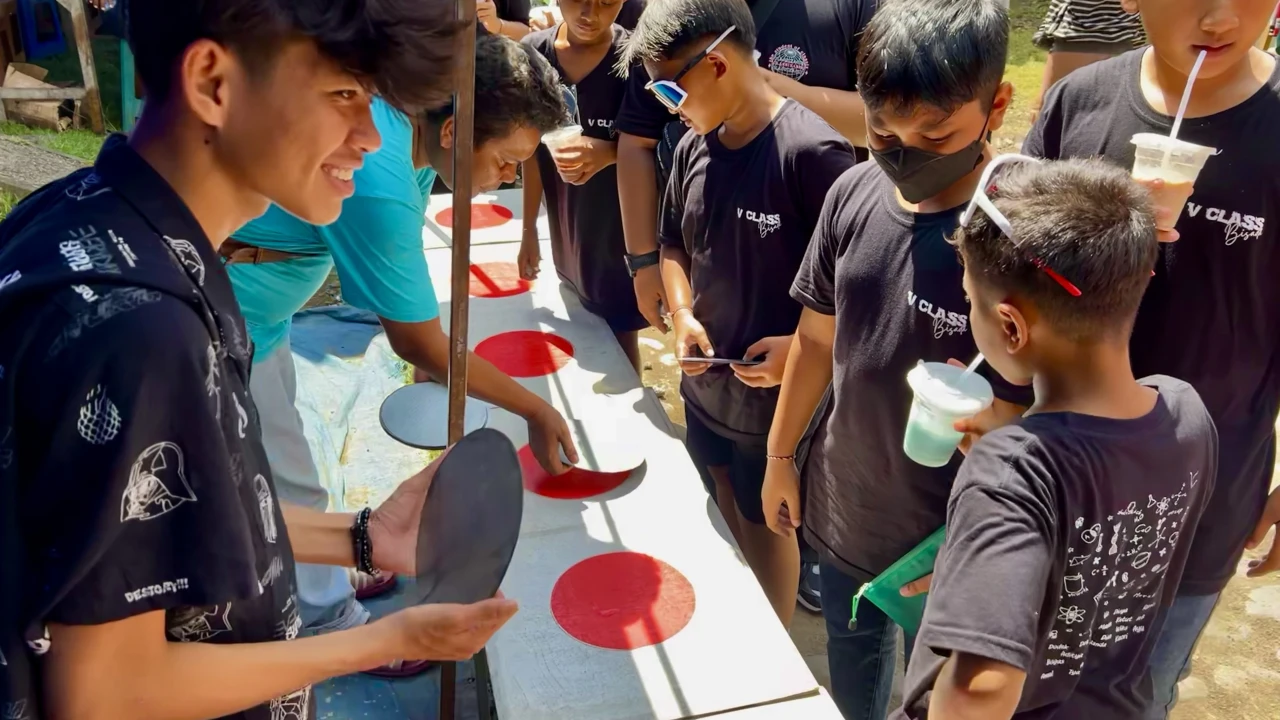
Pictured below is a game similar to roulette. Instead of red and black, there are pictures. You place a bet, and the host rolls a dice. If the image you chose comes up, you win. But as usual, the house always has the advantage. Many people get so caught up in the gambling that they never make it to the fights they came for. That's the nature of gambling...
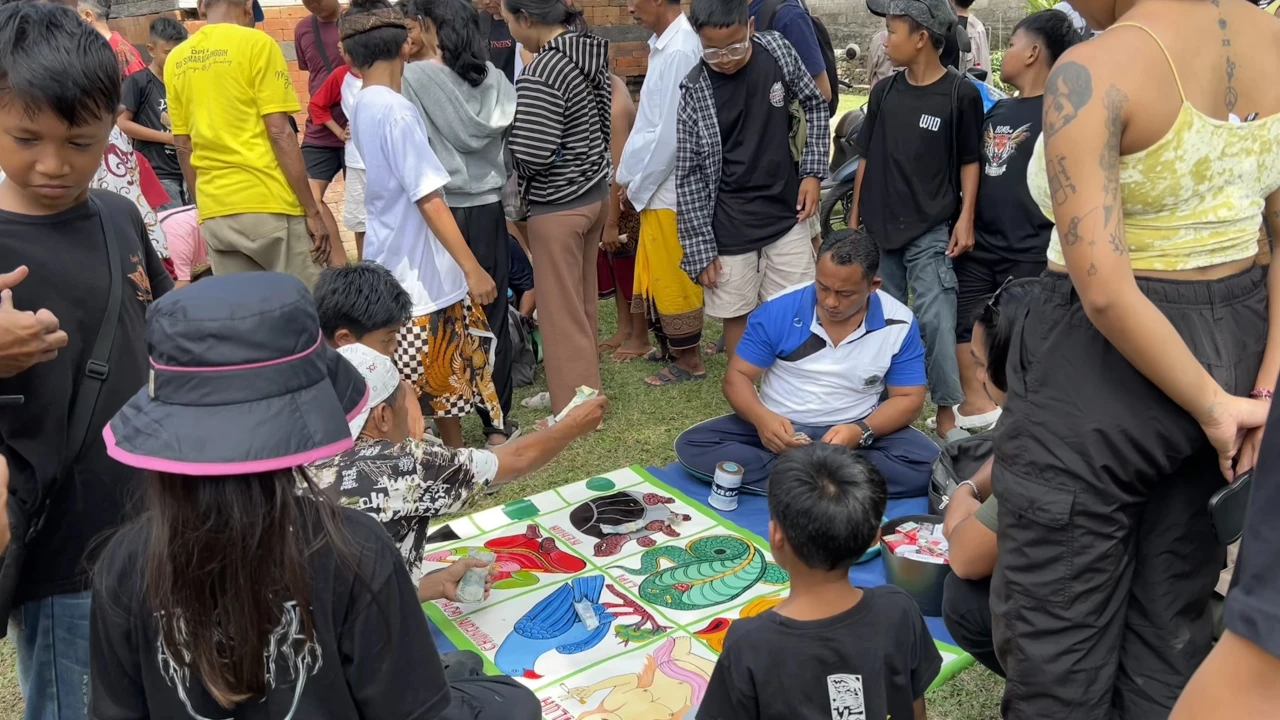
The main event is still an hour and a half away, but the spectators have already surrounded the main village square five rows deep. Among them are foreigners, dozens of photographers, and even TV crews from various channels.
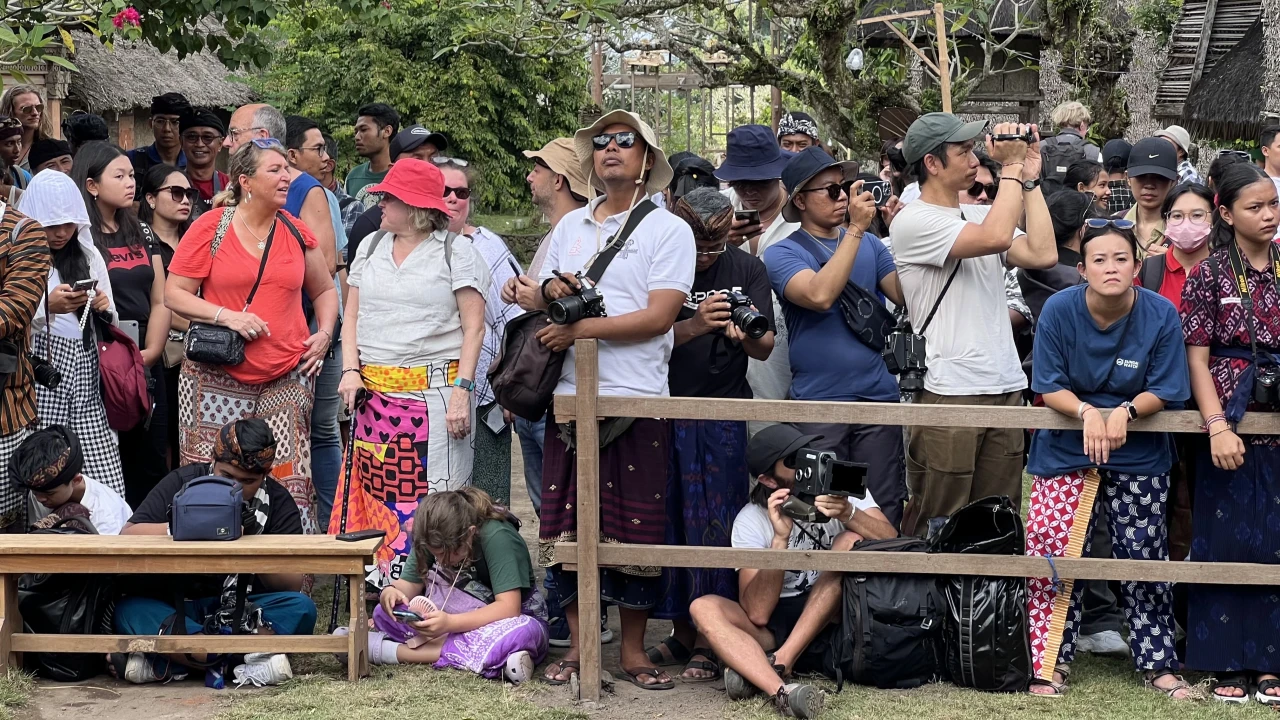
The participants are easy to spot with their bare torsos. They gather in a special pavilion. Some look tense, anticipating the pain to come, while others seem to distract themselves with conversations with friends, who will soon turn into temporary enemies.
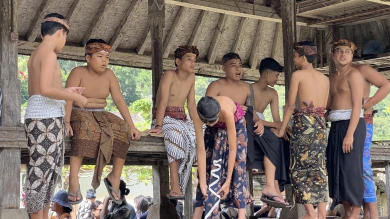
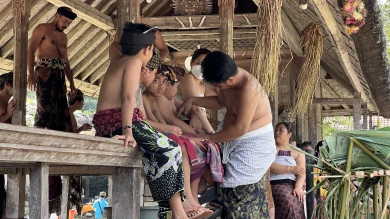
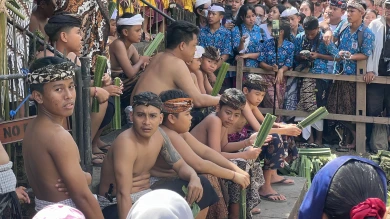
The youngest fighters are encouraged by their parents. It's unclear what frightens them more—the prospect of pulling sharp spikes out of their skin or the hordes of tourists endlessly taking their pictures...

Speaking of the weapons the brave participants will use: if you thought pandan leaves were only used by local grandmothers to dye their delicious pancakes and other rice sweets a bright green, you were partially right. But these leaves also have sharp thorns along their edges that can pierce the skin even with a light touch.
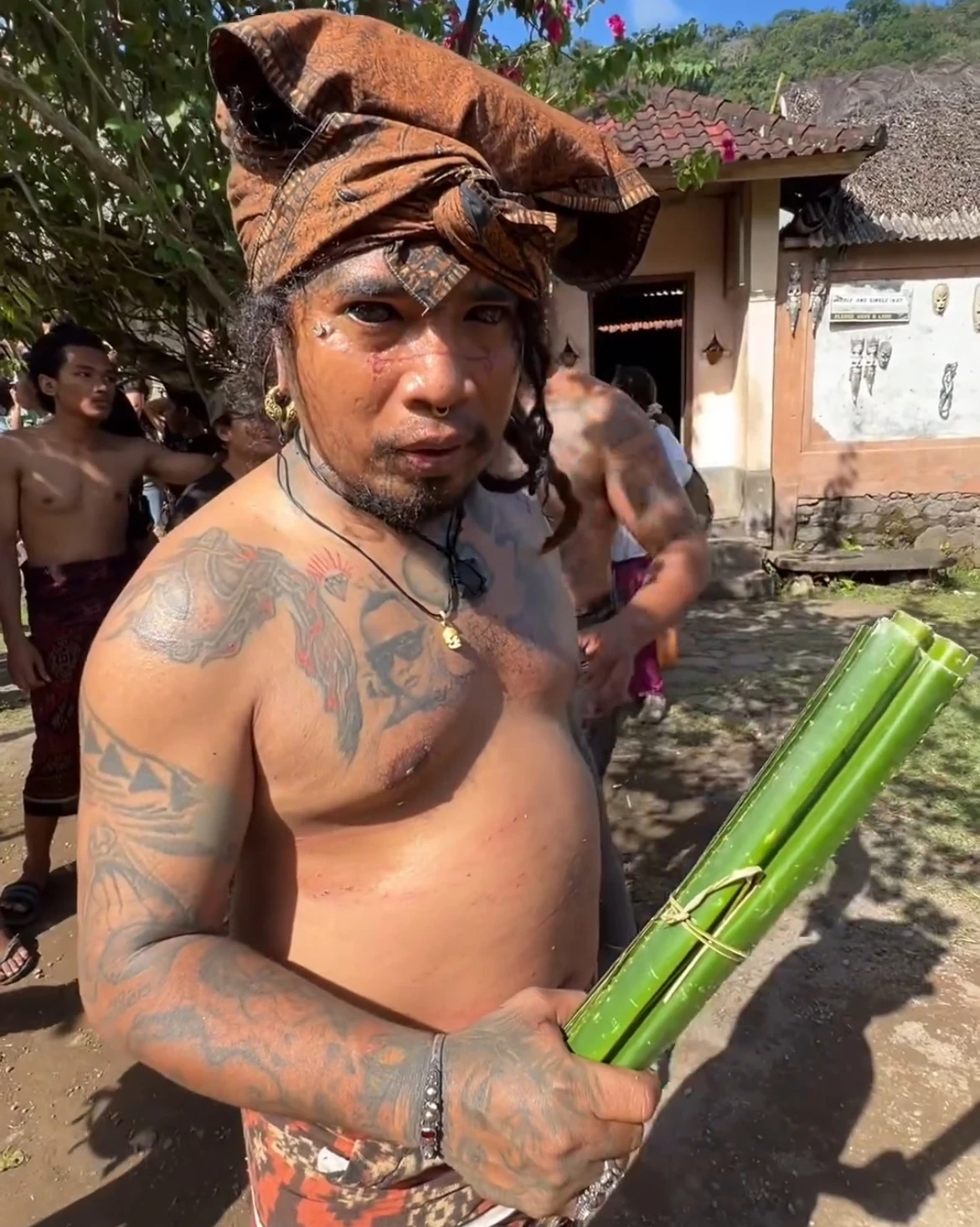
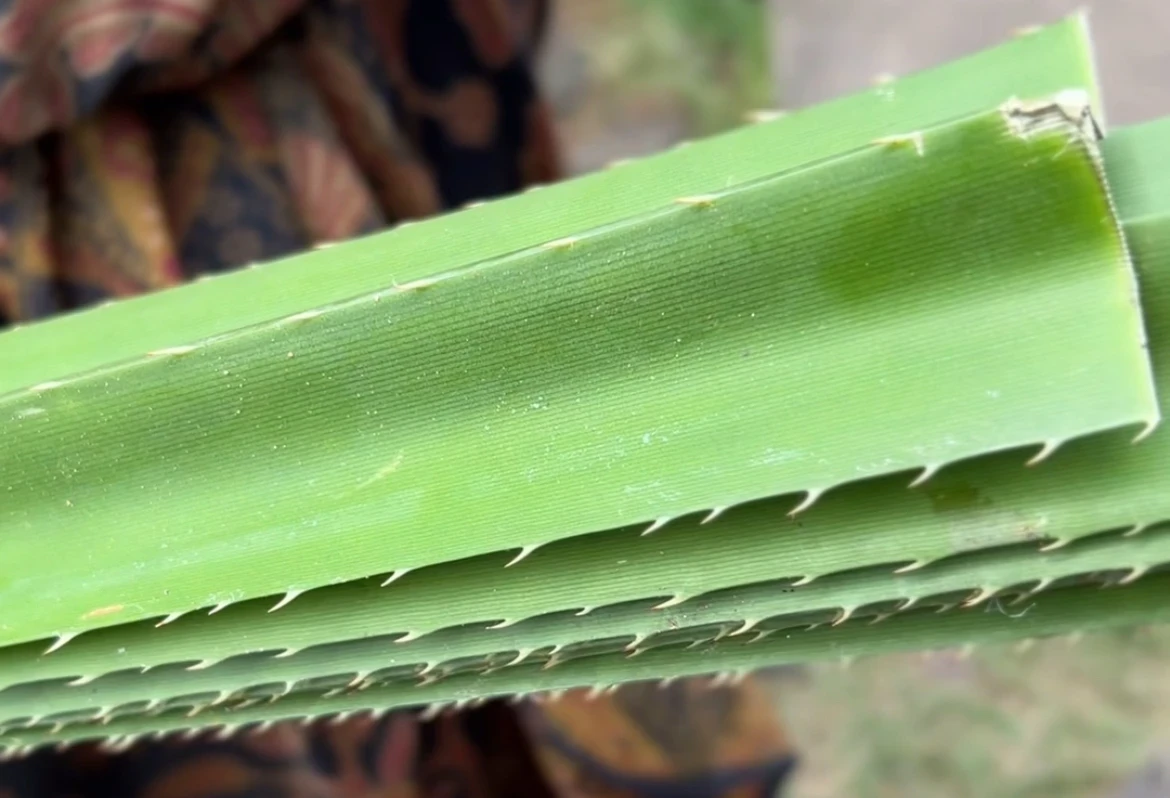
It's these very thorns that the villagers use to lash each other's bare skin on the referee's command. The youngest participants enter the fray first, and the only defense allowed is a rattan shield.
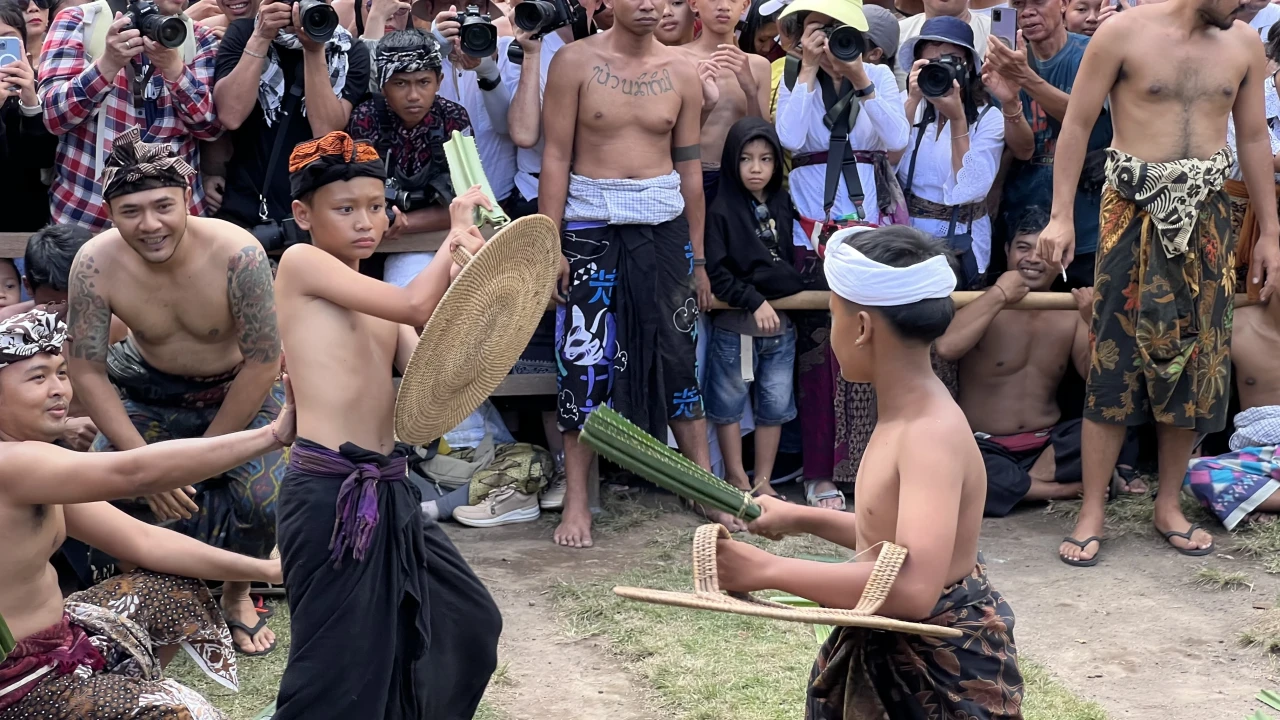
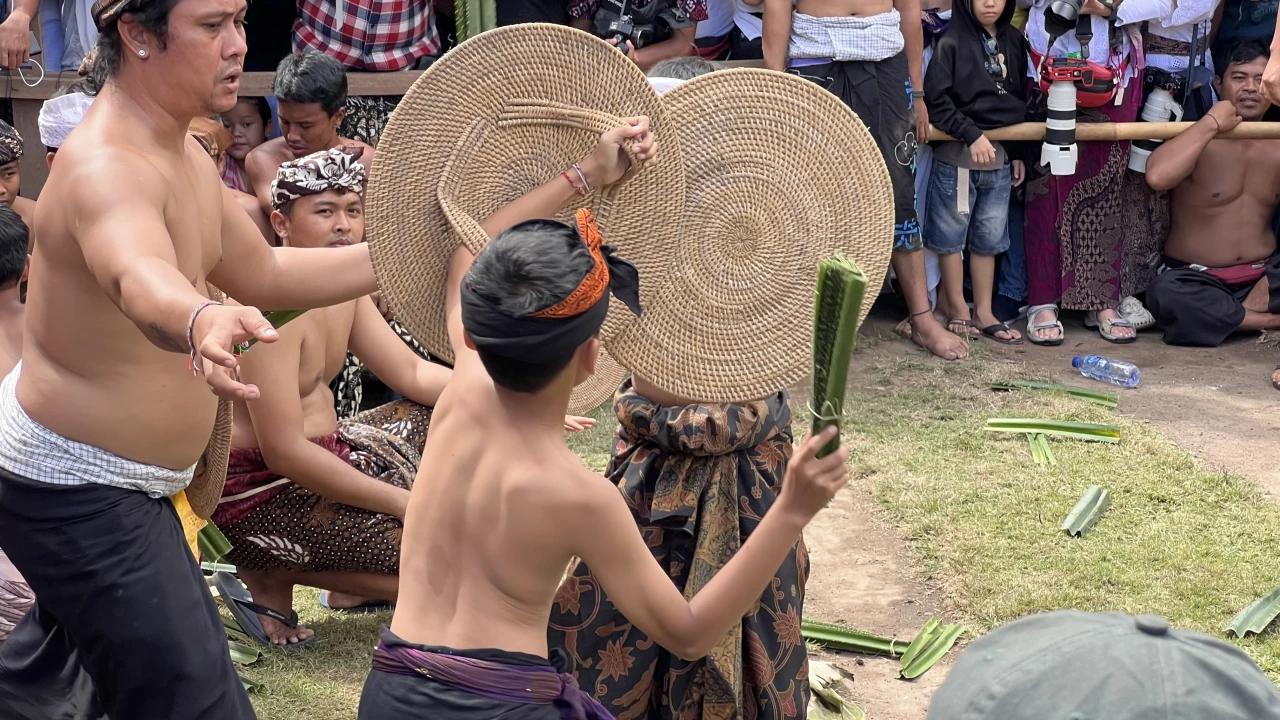
The rule is that the fight continues until the first blood is drawn. It doesn't take much; a single well-aimed strike with the pandan leaf, ideally followed by a scraping motion, usually does the trick. Typically, each bout lasts just about a minute. Without any breaks, the shields and weapons are handed to the next participants. Over the course of three hours, everyone who wants to let off steam, have a laugh, and get an adrenaline rush has their chance.
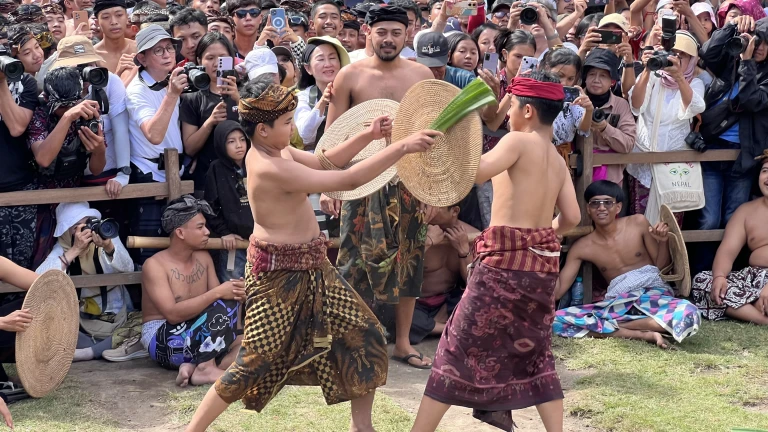
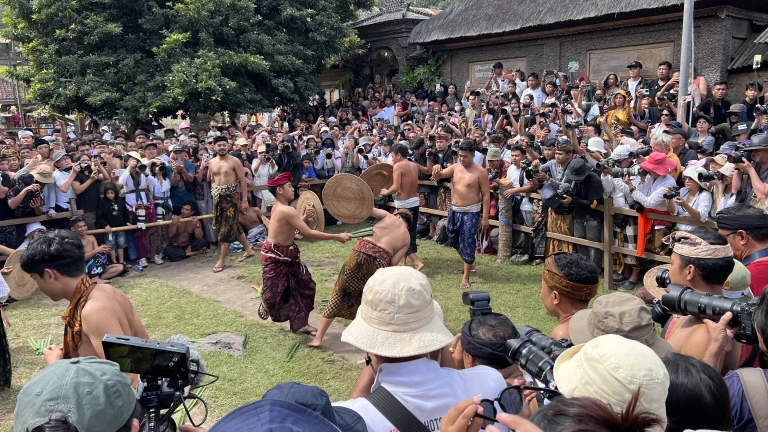
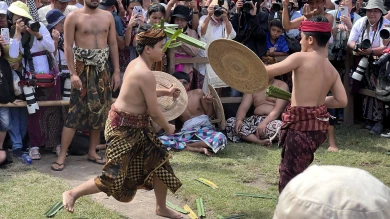
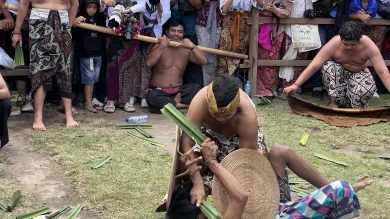
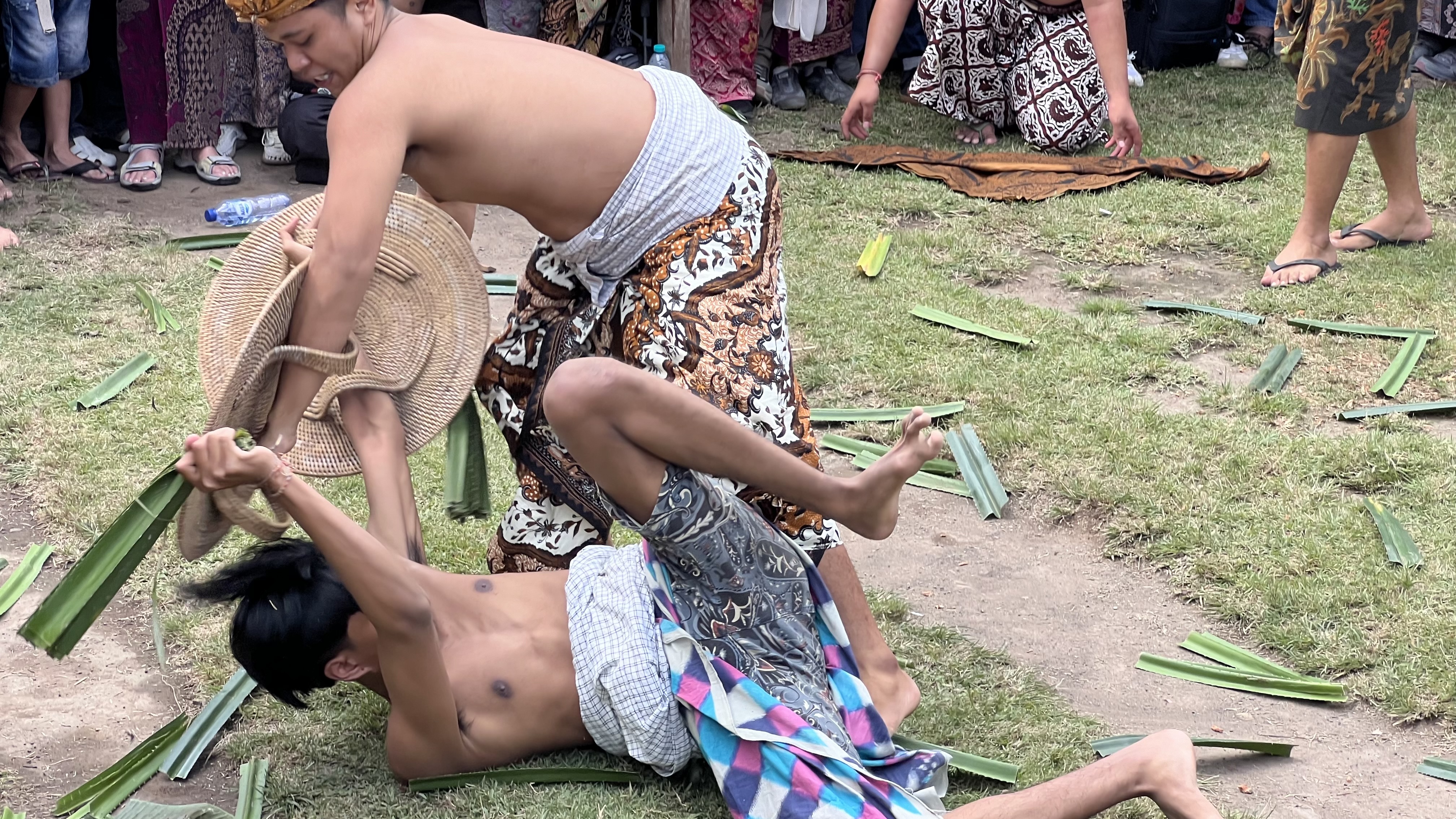
View 1
more photo
more photo
And all this time, the pandan wounds (which are quite visible on many participants) cannot be treated or even have the thorns removed. Only after the entire ceremony is over do the priests apply a special healing ointment made from turmeric, ginger, and coconut oil to the injured skin. At least, that's how it was done in the past. Nowadays, treatment often consists of using arak. Externally, and a little bit internally.
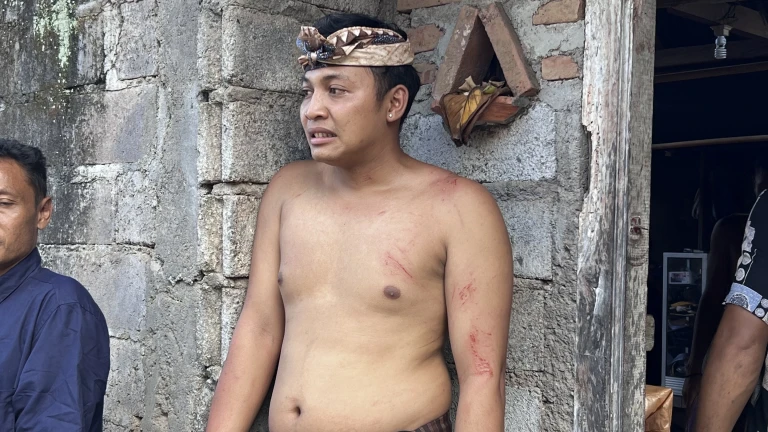
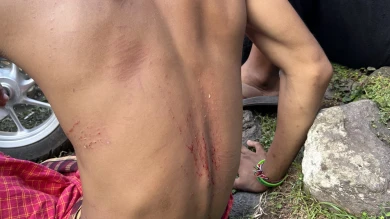
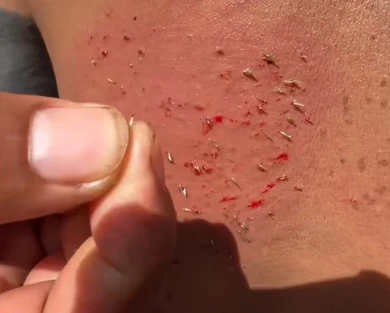
And there are the ones for whom the blood is shed in Tenganan Pegeringsingan: the village girls, who use the "pandan wars" to find the bravest and most courageous groom.
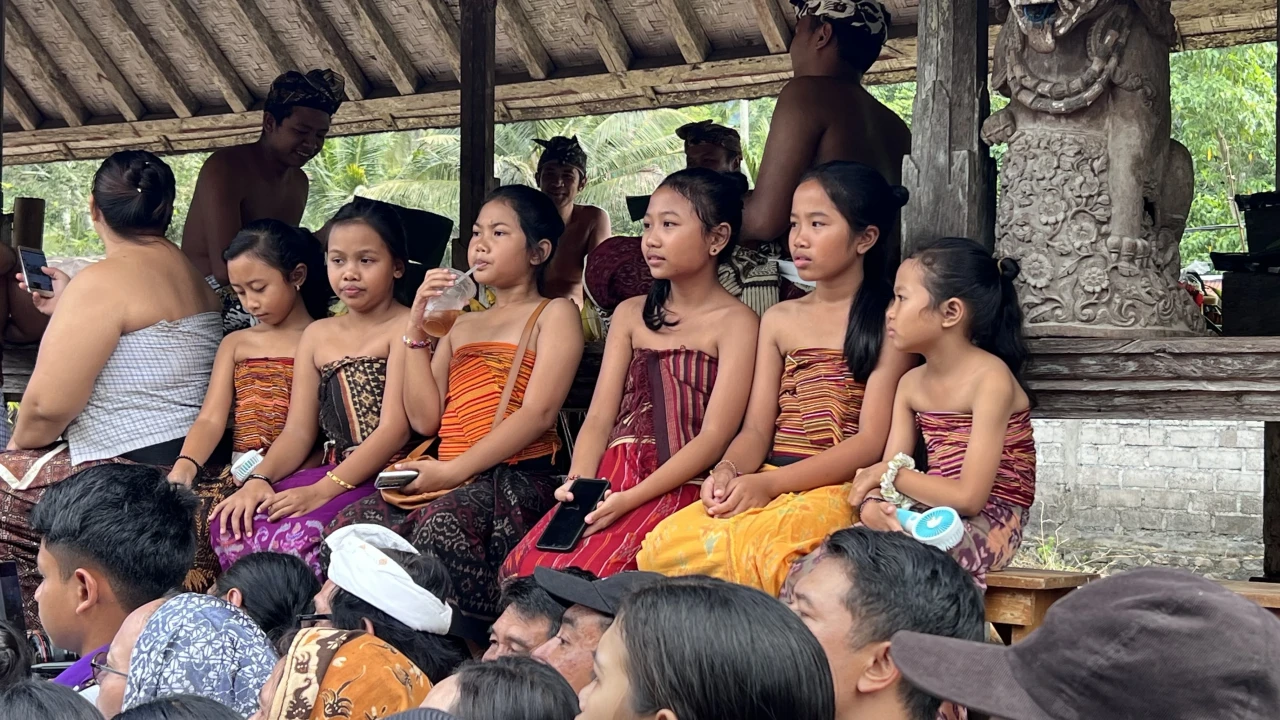
But honestly, after a couple of fights, the ladies quickly get bored and bury themselves in their phones. Traditions are traditions, but TikTok won't watch itself.
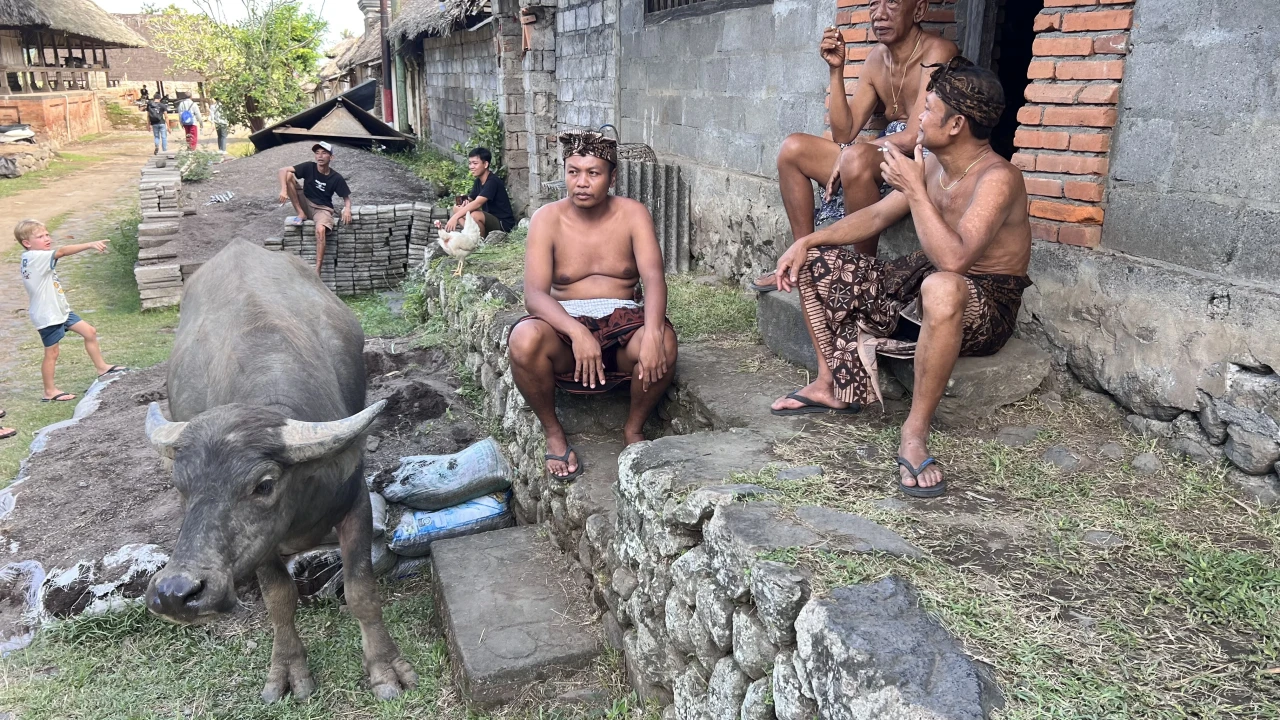
By the way, the residents of Tenganan Pegeringsingan belong to the Bali Aga tribe (yes, the same tribe where the deceased are not buried but placed under a sacred tree). This very small indigenous group on the island has preserved their traditions and customs from long before the arrival of Hinduism. Even for regular Balinese, all this is quite exotic.
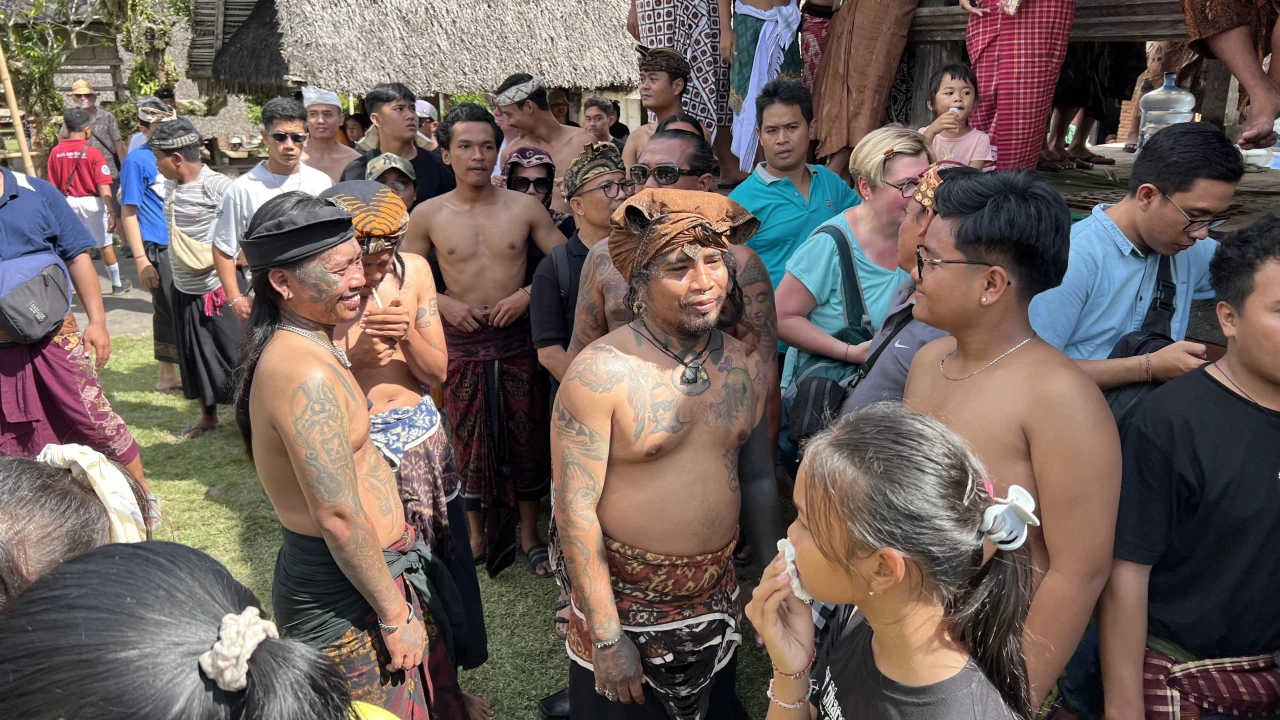
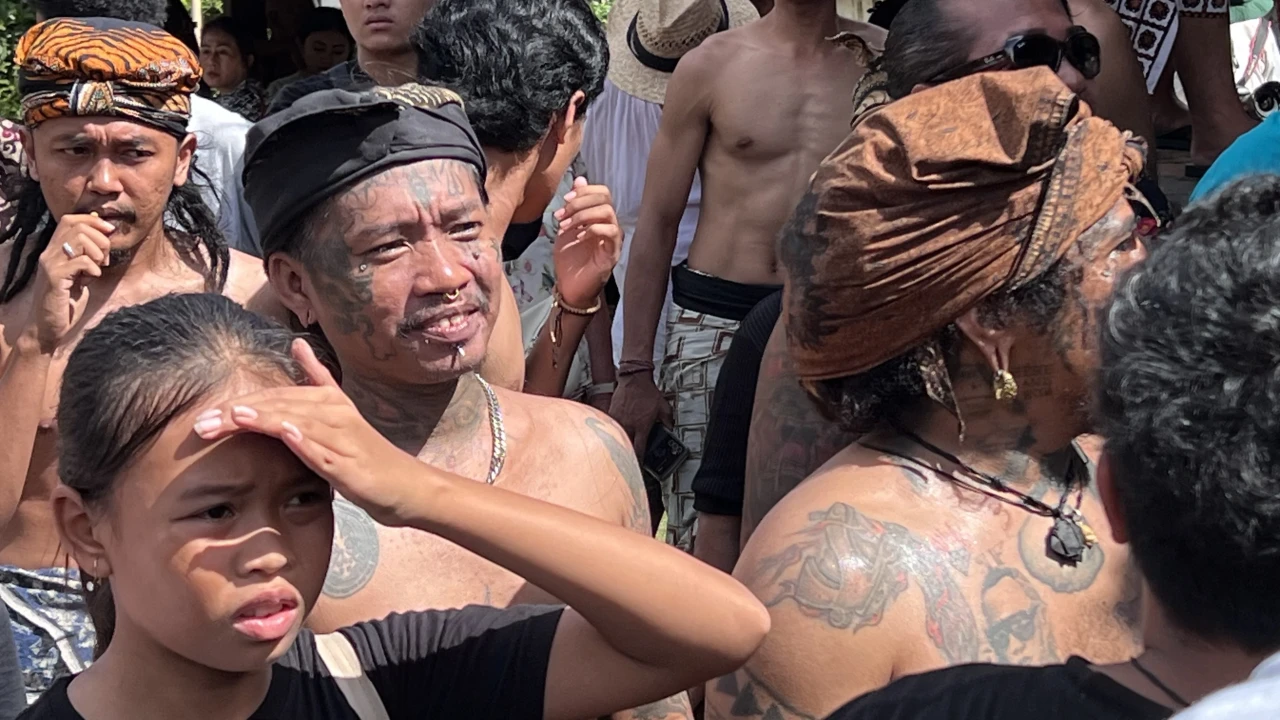
You can visit the village any day, and the locals are quite friendly
towards tourists—just as long as they don't have pandan leaves in their
hands, of course (just kidding). You can stroll through the unique streets, observe the buffaloes, and, if you're fortunate, witness the villagers crafting their unique textiles. Tenganan Pegeringsingan is the only place in the world where Geringsing fabric is produced.
This fabric is believed to possess healing properties and can purportedly cure various diseases. Whether that's true is uncertain, but the production process itself is remarkable—it takes about three years!
You can add one right now!